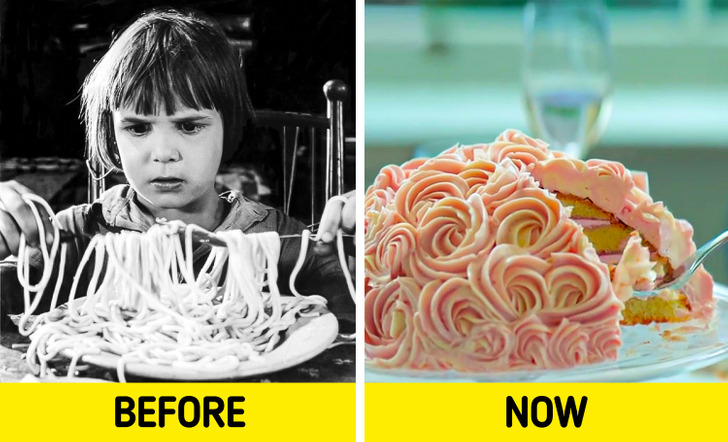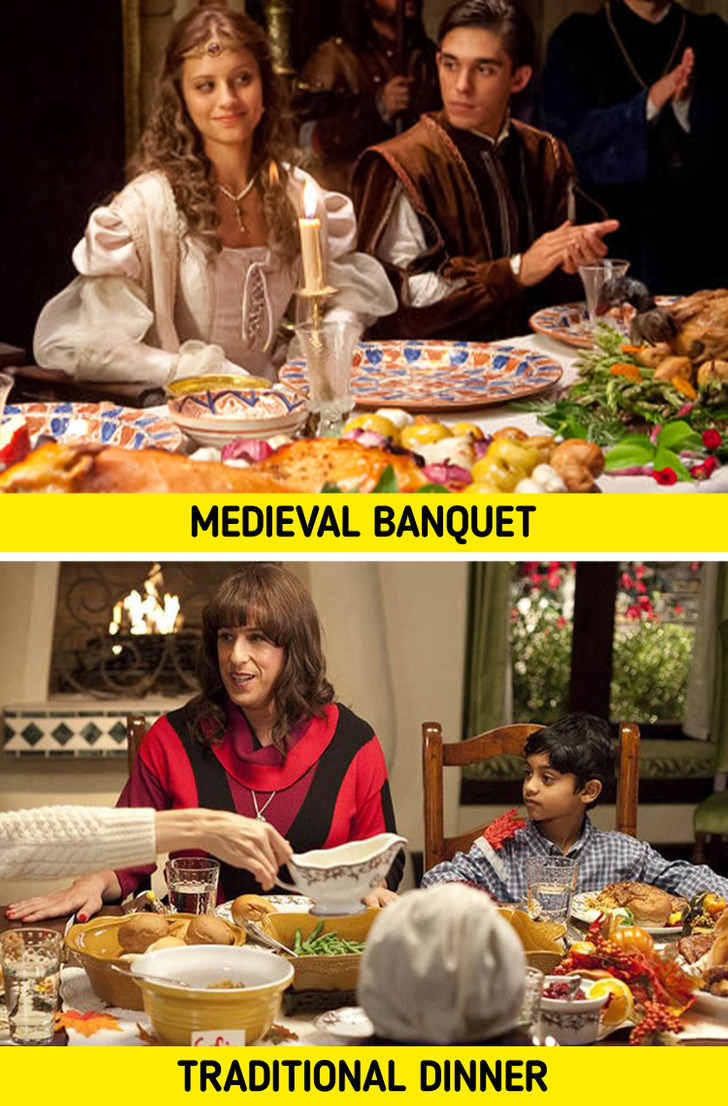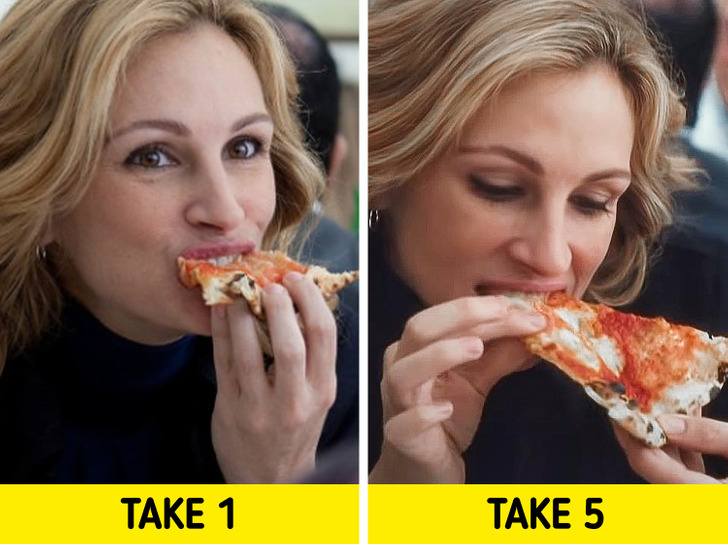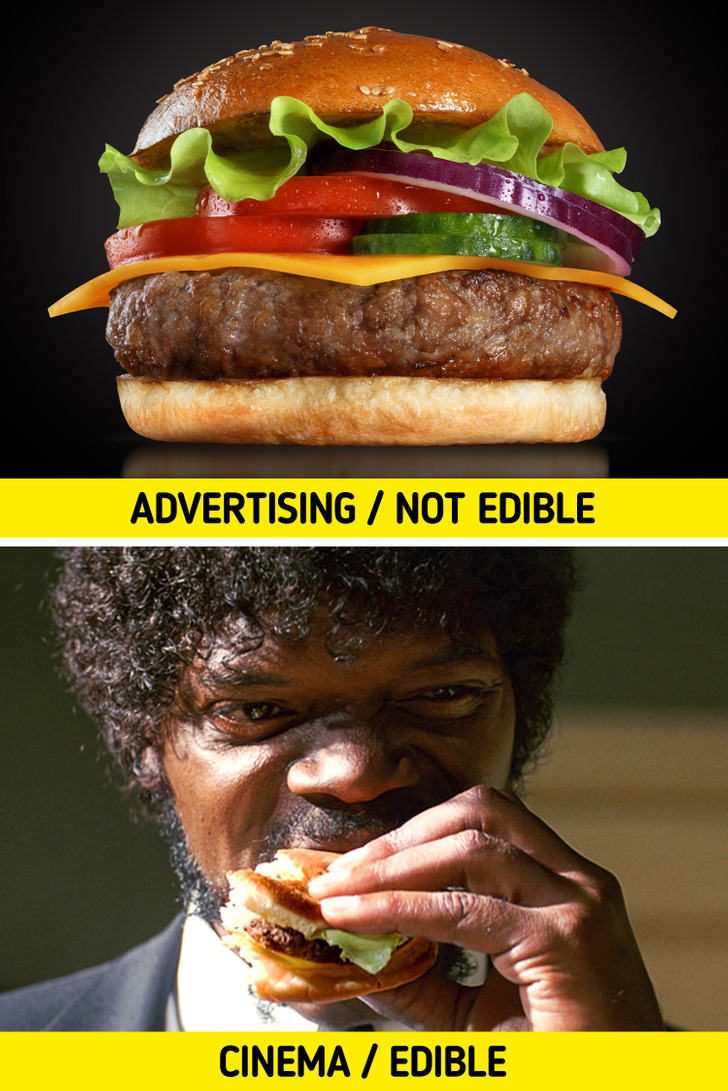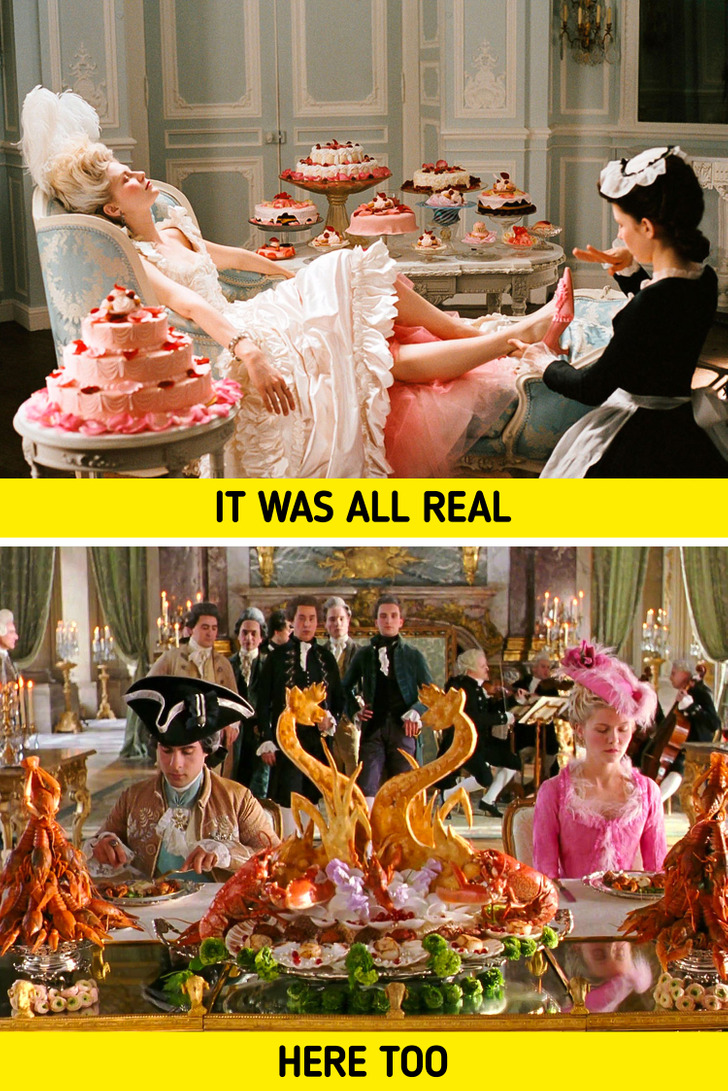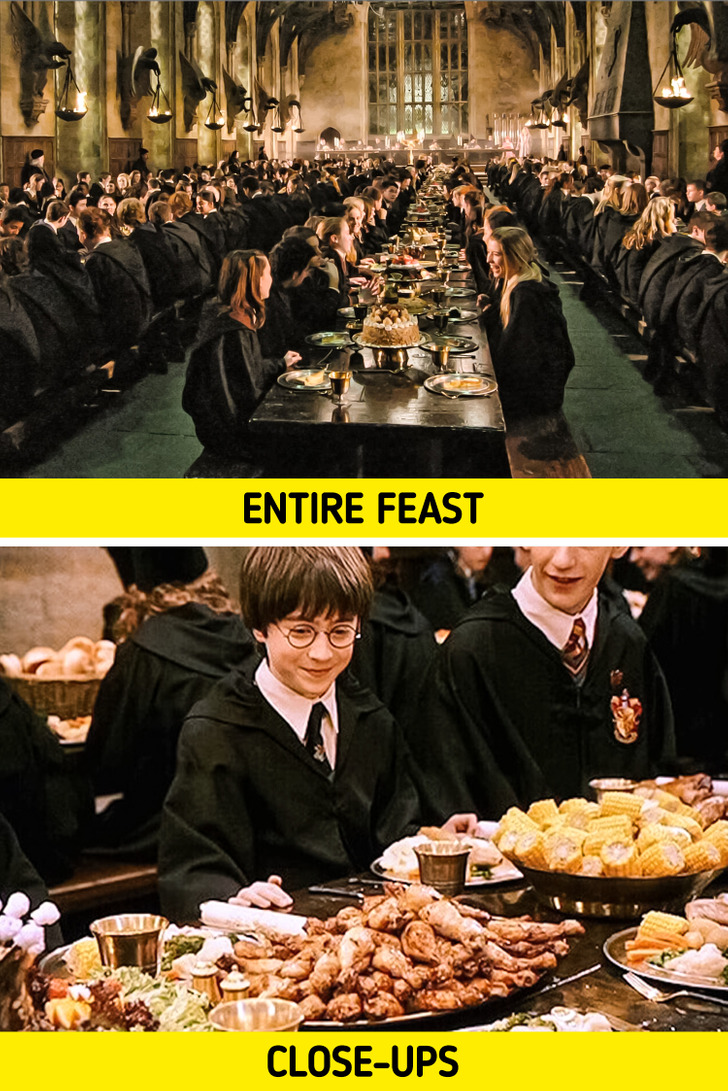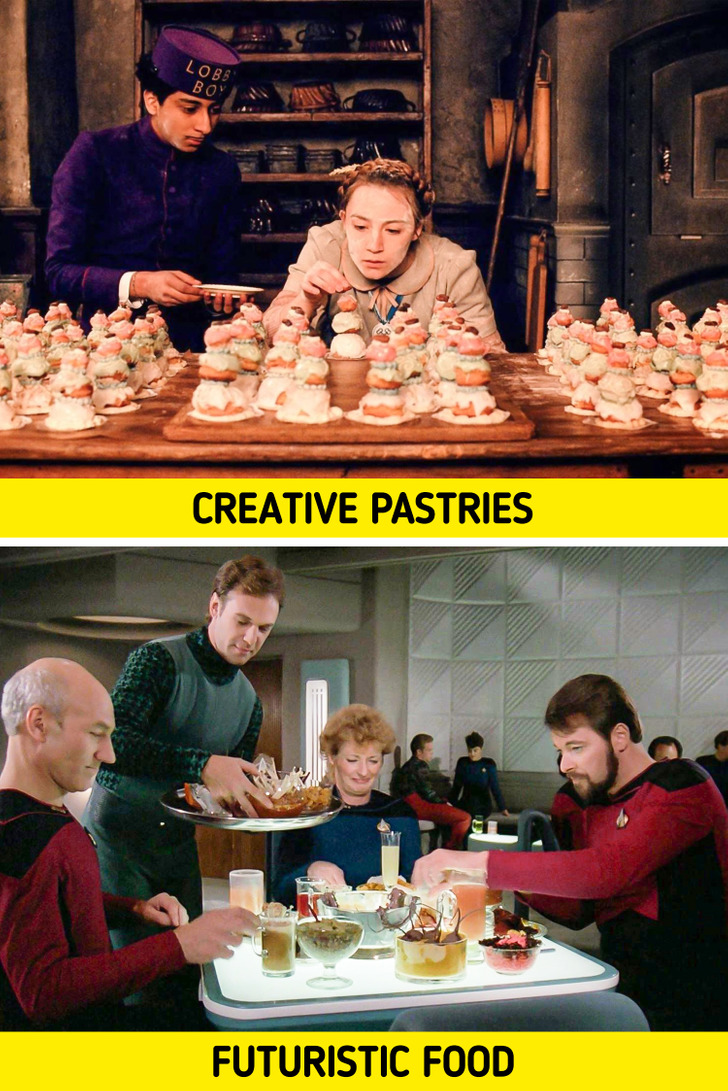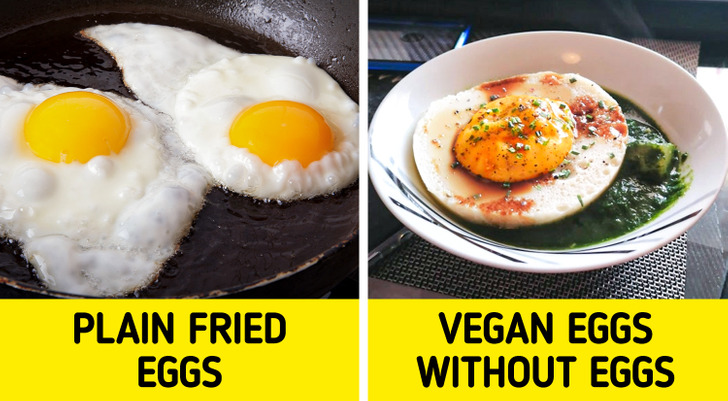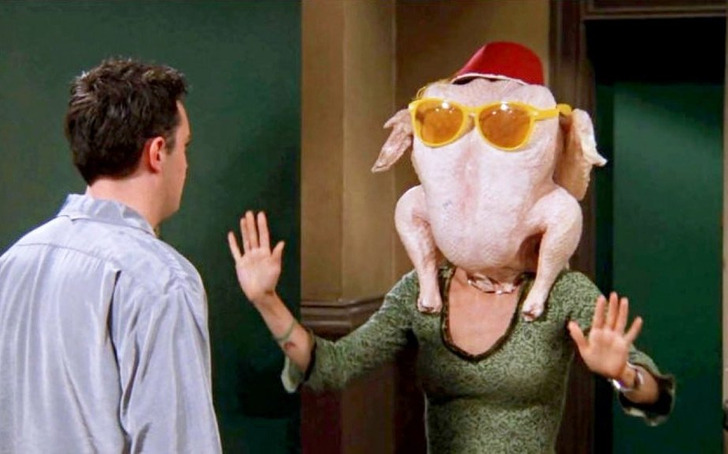11 Facts About Prop Food in Movies That Will Make You Want To Watch Many Films All Over Again
In movies from the ’60s, the trend was to use pasta, mainly spaghetti, for scenes that included some type of lunch or dinner because it was easy to make and stayed in good condition on the plate for quite some time. But like other things, movie food has also evolved in recent years, creating a whole gastronomic underworld around it, which, in addition to chefs, also includes specialized photographers and culinary stylists.
1. The food is prepared by highly qualified professionals.
The role of film culinary stylists is not just to cook, but to also make food look realistic on camera, as well as edible and able to withstand the demands of filming (duration, weather, temperature, etc.). Of course, in addition to all that, the food needs to look tasty for when it appears on camera.
Because of all that, culinary stylists need not only extensive culinary training but also knowledge of nutrition and state-of-the-art cooking techniques, such as molecular gastronomy, the science that investigates the transformations that ingredients undergo during preparation.
2. Each dish requires prior research.
Stylists should be informed in advance not only about what they will have to prepare but also about what other factors may influence the appearance or outcome of the dishes. For example, if the film has a historical setting, if it’s fantasy or science fiction, or if the dish is traditional to a certain geographical area and has a specific way of being prepared or presented, these things need to be noted.
“In front of a camera, everything has meaning, including food,” says culinary stylist Marta Cárdenas. “We have to have an art director’s mentality, look at pictures, photographs, and old cooking magazines to find inspiration.”
3. Large quantities of food are in order.
When it comes to filming, each dish has to have several replicas in case there are multiple takes they’re needed for. “For a Thanksgiving scene, I need 8 to 24 turkeys because every time they cut a turkey, they need a new one,” says chef Chris Oliver, one of the most famous food stylists in American film and television.
In addition, there are scenes where actors actually eat; if they eat half a hamburger and the scene has to be repeated, they need to start over with a whole new hamburger again. For the filming of the movie, Chef, about 800 Cuban sandwiches had to be made. “You have to eat and then you have to eat again, and then you have to eat again for every angle and every shot,” says its director, Jon Favreau.
4. In film, unlike photography, real food is almost always cooked for shoots.
Preparing a dish just for a photo shoot is very different than what you would do for a movie scene. The former may not even be edible and no one would notice, but in movies, especially now that directors want actors to interact with their real food to make scenes more believable, faking food is almost impossible.
At the same time, with technological advances, such as high-definition (HD) lenses, fake things are exposed on camera, which is why more and more producers are going for 100% authenticity with everything that appears on camera, including food.
5. However, there are occasions in which some foods are indeed fake.
Sometimes props are used when they are not intended to be eaten by the actors and their purpose is merely decorative. This is what happened in the filming of the birthday scene in the movie, Danny Collins, for which a fake cake had been prepared since it was not going to be eaten, but at the last minute, the director changed his mind.
“We had to cut the cake, which was made of styrofoam, with a saw because none of my knives could cut through it, and then we put real layers on the cake to make it look like the real thing. Eventually, we had to send people running to many markets to get white layer cakes to make it look like the people in the background were really eating the cake,” recalls stylist Melissa McSorley.
6. Some dishes don’t make it into the final shot, but they are almost always eaten by someone.
It’s not very common for there to be leftovers; actors usually have to eat during their scenes and the film crew is in charge of finishing the leftovers. Whatever is left untouched on set and in good condition can be refrigerated and saved for other projects, donated to charity, or recycled to create other dishes, jams, or sauces.
7. The health of the actors must also be considered.
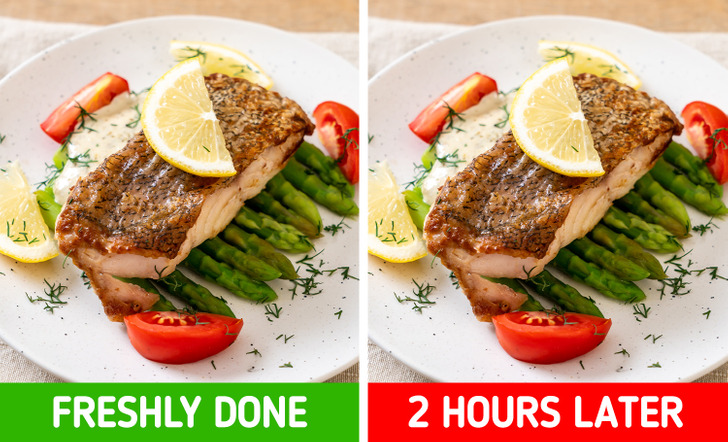
Many foods spend hours on set and not only have to look appetizing scene after scene, but they also have to be kept in good condition. Sometimes dishes are replaced with fresh ones, and other times, alternatives with longer shelf lives are created. Fish and seafood are products that easily go bad and become highly toxic.
For those cases, culinary stylists must look for alternatives that, in addition to being visually similar, are still healthy. “I’ve had to make a lot of fake oysters, I make them with custard, a pastry cream that I then color, and with a brush and air I shape them. They slide perfectly out of the oyster,” says food stylist Melissa McSorley.
8. New food is constantly invented and prepared, even if it doesn’t exist yet.
Preparing a banquet set in the year 3000 on some planet outside the Milky Way requires a lot of research and creativity. The vegetation would probably be totally different if there was any. Culinary stylists have to use all their imagination to create dishes that don’t exist, but they still have to be believable to the viewer, taking care not only of their appearance but also their taste, texture, and presentation.
“The hands (of the actors) may be in gloves that are not rubber, but carved silicone or latex, molded so they don’t look like human hands. You have to be careful what you try to serve them because they can’t really use their hands. They’re eating with gloves,” says Janice Poon, one of the most popular food stylists in American television.
9. Culinary stylists use a wide range of utensils.
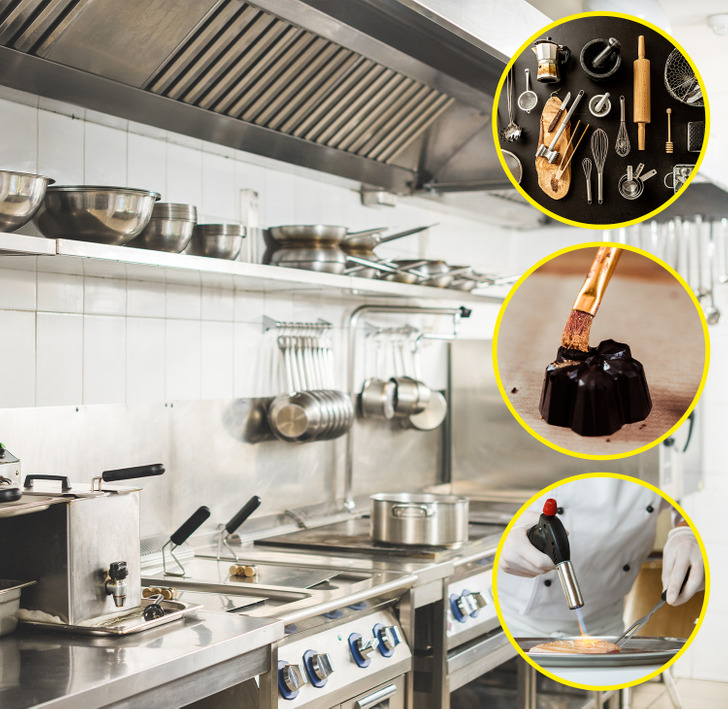
If you want to know what a culinary stylist needs to be able to do their job, think of all the utensils you have in your kitchen multiplied by 10, plus an arsenal of specific tools for various tasks, such as tweezers, brushes, syringes, sprayers, blowtorches or freezing sprays, among others.
Often, the shooting locations are in the middle of nowhere or a place where there’s no kitchen available, so the film culinary stylists have their own mobile kitchens, which are modern and sophisticated caravans equipped with everything they need to prepare their dishes wherever they are.
10. The dishes in the script must be adjusted to the personal diets of the different actors.
Before starting production, the kitchen team must find out about each actor’s diet. Actors may suffer from food allergies or may be subject to temporary diets required for a role. Of course, specific types of food due to personal choices are also a thing in Hollywood. Chef Chris Oliver remembers a time that, for a scene, a vegan actor had to eat a fried egg, and because he was vegan, he was unwilling to do so.
The kitchen team had to make a fried egg that looked like a regular egg but that was suitable for vegans: “How do you make a vegan egg? If I told you...molecular gastronomy. I can’t even explain to you how, but I can do it. It was mango and tofu. If you look at the scene, you won’t tell the difference.”
11. Sometimes food stylists don’t know exactly how they will use the food they prepare.
Food stylists who work on multiple projects at a time can’t always stick around to see how their food will be used. They may later find out that a gorgeous spread was relegated to the background or worse. For a scene in Seinfeld, chef Chris Oliver was once asked to prepare a perfect, glistening turkey. “Later, I was home watching the episode, and they had put the turkey on Kramer!” she says. “I was literally crying I was laughing so hard. Never in a million years did I think my turkey was going to end up on a guy’s head.”
What is your favorite food, and have you seen it in a movie?
